Sponsored by Fiserv

Exploring automation to improve payment processing workflows demands an integrated, multifaceted approach. In efforts to reduce costs and maximize efficiencies, healthcare organizations are managing relationships with internal and external stakeholders to determine the role that automation can play in their revenue reporting and other activities.
While artificial intelligence (AI) can optimize certain processes, it may not be the answer to streamlining every initiative. During this roundtable sponsored by Fiserv, revenue cycle leaders share their challenges, how they have enhanced payment processes through automation, and how they have identified opportunities for improvement.
Todd Nelson: What challenges are your teams having with managing revenue reporting?
Angela Shelton: We haven’t been able to automate a lot of it, so there’s still manual reporting because our entities are on different systems: clinic’s on
Athena, hospital’s on MEDHOST and surgery center’s on Amkai.
Seth Katz: We have similar challenges, and our volumes have been higher because of the pandemic. Having staff available to process and post that cash and keep things moving has also been challenging for us.
Courtney Guernsey: We’ve invested in revenue reporting over many years and created homegrown reporting to reconcile at the levels that we need without a ton of manual intervention. It’s a custom report that we built in Epic, a clarity report that allows us to reconcile by tax ID and that generates automatically.
Channing Monti: Do you have a team that gets involved if there are exceptions identified or breaks in that revenue reporting?
Guernsey: Yes, our cash applications team handles all of that, including our triangular reconciliation process with finance and our bank.
Jana Danielson: We don’t have too many challenges other than exceptions that come up, and we have put a lot of time and effort into a homegrown process where we use a robust build from an access database. Because we have several banks, use Epic, and retail pharmacy and pathology service that sit outside of Epic, we have a lot of remit splits and other things that we reconcile back to the detail level on a daily basis.
Nelson: What are some of the opportunities for improvement that your auditors have uncovered? What have been the most difficult to address?
Guernsey: Our biggest challenge is the turnover and educating our new auditors on the payment posting process and the reconciliation process.
Monti: When you do have auditors involved, whether internal or external, do you provide them access to your systems?
Danielson: Most of the time, if we’re using somebody external who’s contracted through internal audit, we would give them view-only access. If it was a payer, that would be a different discussion. We also audit to make sure that people are looking at things that they should be looking at. For example, Epic has functionality where you can limit the ability to see things based on key criteria, where they would only be able to pull up things that are within their book of business.
Guernsey: Internal auditors have access to our systems to view the information that they need. Depending on the scope of a project, if we are contracting with an external auditor, typically we provide them the documentation that they need without access to the system. If it’s a massive project where it makes more sense to give them temporary and view-only limited access, then that’s considered, but it’s not common.
Nelson: How frequently are you performing balancing and reconciliations, and is it working for you, or would you like to adjust it?
Danielson: We’re doing it daily, and we find it to be beneficial, because sometimes if you get behind and you’re off, it’s harder to find where the mistake is. Keeping up with it on a daily basis seems to be more efficient.
Casey Trujillo: We’re doing the same, which allows us to capture things and get ahead of problems.
Guernsey: We do it daily as well, and it’s essential to ensuring that we operate efficiently.
Monti: And these are scheduled processes that automatically get initiated without any kind of human intervention?
Guernsey: Ours does require some manual intervention, but it is automated in terms of kicking it off and running the necessary reporting.
Nelson: What areas around payment processing have you automated so far?
Danielson: Many different processes that tie together have helped us to automate our payment processing, such as matching EFT with bank deposits. With the database process primarily automated, it produces reports that flag issues such as a mismatched EFT and zero pays, and that automatically ties into productivity reporting and other things. We’re in the process of moving the database to a next-gen platform. Our current databases are housed on a local server and so we want to be able to move that — even if it’s just the front end — to create easier access for people who are working from home.
Guernsey: We’ve been focused on increasing our automated posting rates; hospital billing is currently at 96.9% and professional billing at 95.7%. I’ve been pushing for the resources from our payers to be able to autopost versus manually post.
Danielson: We’re probably at 90% with the external systems, which require some manual work involved to send the files to the other systems. For Epic, it’s a higher percentage.
Nelson: Are there areas that you haven’t automated yet and you are thinking about automating?
Katz: We’re getting deeper into the automation of cash posting, something that’s going to work 24/7 and handle those simple clicks that we used to pay somebody to do. We’re budgeting pretty heavily for this in our next fiscal year. I’d rather have staff working at a higher level, spending their time on things that can help drive revenue and get things done faster. One issue we’re addressing is when piloting robotic process automation; it was blocked by our bank due to cybersecurity concerns.
Nelson: Organizations have started to lock down things more from a cyber-security perspective, whether that’s health systems or financial institutions, and so it’s important to develop relationships with trusted partners.
Shelton: We’re starting to work with bots to handle tasks in the revenue cycle and trying to determine what the limits are. We’re not eliminating staff, but having them work at that higher level — so automate smaller things a bot can do and have staff focus on work where they need to think outside the box.
Danielson: Depending on what the long-range plan is at some places, the goal may be to not have to increase staff as volumes increase. It’s twofold, having staff working on things that are much more difficult, but then also managing your resource expenses.
Katz: When talking to different companies and doing RFPs, our concern is, what happens if, for instance, a payer changes their website or our EMR moves a button around? We don’t want to have to recreate and rebuild those bots each time.
Guernsey: We found that with multiple revenue systems and things like zero remittances that come through, the matching is not always correct, and so we have pulled away from using bots in our cash application system. Interested if others have had similar experience or have had success, and then perhaps it’s the vendor or the bank that causes the issue.
Danielson: We’re not using bots in cash apps either; the applicability doesn’t seem the same as in other areas.
Monti: A lot of organizations are moving to cloud environments, which causes stress on the multiple back-end systems that these organizations are running from a back-office perspective — financial activities as well as getting data to and from the general ledger and back to any other external sources. Transactional items and payment sources are increasing, and so from a human resource standpoint, how can we do more and become more efficient with what we have while utilizing some of these technologies. The other side of it is just looking at where vendors are going with their platforms and what else is out there to potentially leverage.
Katz: Whether you’re talking about automating cash posting or prior authorizations, you’re putting a lot of faith in a piece of software, and so you need to do your due diligence and have protections in place. For instance, I always expect vendors to have some sort of SLA [service level agreement] that ties into the contract.
Nelson: How do you make that determination, such as a recommendation from your bank, HR or peer, or do you go through a specific process?
Katz: We start with our EMR vendor, seeing if they have other clients who have products that are already live and working, so we’re not building something from scratch. We also try to get more in- depth. For example, identifying exactly what happens if this box moves over one space, and when possible, we test in a non-prod environment.
Danielson: I agree, and the only step I would add is looking to see if it’s something that a current vendor actually provides.
Guernsey: Finding a good vendor partner is critical. I tap into my network of peers at similar-sized organizations using similar platforms because word-of-mouth is sometimes the best. We’ve had that experience with bots where one thing changes, and you’ve got to go back to your logic and redo it. One question we always ask is what the administrative lift is to use the product because we’ve had to add FTE’s in the past to help manage vendors.
Katz: With healthcare, there isn’t necessarily a lot of in-house expertise on bots. This is something new, where we’ve had to expand our IT expertise and support, looking at maintenance and upgrades.
Nelson: If part of the system breaks, how do you manage?
Katz: Because our EMR tends to have a fair number of upgrades, we ask what percent chance there is that it’s going to have to be rebuilt, providing specific examples such as if this checkbox moves from the top right to the bottom left, what’s going to happen? [We also talk] to other clients who have used the product and discuss what happened when there was a bank change or system update.
Guernsey: We did invest in a platform to allow us to create our own bot technology into our own scripting, so we have an internal team that knows immediately when something breaks because they can see that their file has been disrupted. We also have an external partner, and while a less immediate, the vendor knows right at the time it breaks. We can tell from our volumes whether or not something broke or wasn’t operating in full capacity, such as a payer updating their website, causing a 24-hour delay. If you’re partnering with someone who’s not forthcoming, it can cause a lot of disruption.
Monti: What are some of your priorities when it comes to payment processing and automation?
Guernsey: One of our biggest initiatives for the cash application space is working with our payer relations team to force language in our contracts with payers that do not provide EFTs and 835s for free and want to charge us a percentage of our revenue to get that file to electronically post. Our goal is to automate, and so we’re not willing to pay money to get our money.
Danielson: I would echo the continued focus on automation just in general, whether it’s cash apps or other functions within the revenue cycle, to continue to improve and make things more efficient.
Trujillo: We’re moving toward automation and possibly away from cash altogether, going to a credit or debit type of environment within clinics to improve on that automation.
Panelists
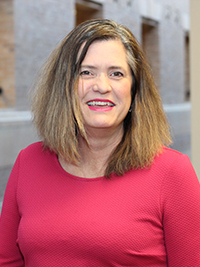
Vice president of revenue cycle at Nebraska Medicine in Omaha, Neb.
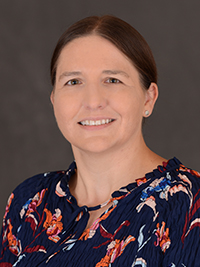
Senior director of patient financial services at Spectrum Health in Grand Rapids, Mich.
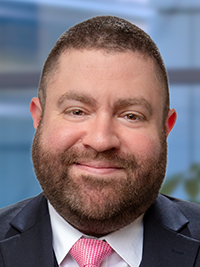
Vice president of revenue cycle and health information management at University Health in Kansas City, Mo.
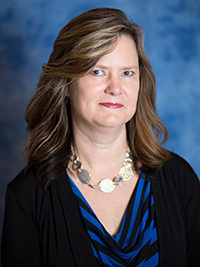
Chief revenue cycle officer at Hughston Clinic in Columbus, Ga.
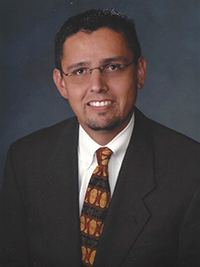
Assistant director — shared revenue cycle at University of Kansas Health System in Kansas City, Kan.
Moderators
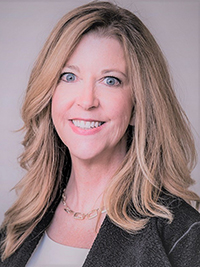
Director of product marketing at Fiserv in Brookfield, Wis.
is director of product marketing at Fiserv in Brookfield, Wis.
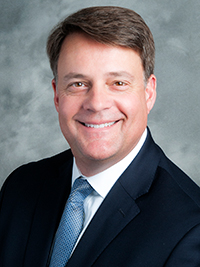
Senior sales executive at Fiserv in Brookfield, Wis.
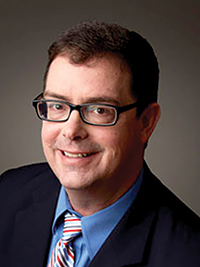
Director, partner relationships and chief partnership executive at HFMA in Westchester, Ill.
About Fiserv
If revenue managers are looking for a reconciliation solution and want to learn more about Fiserv’s offerings for health care, they can contact Channing Monti at [email protected] for a demo.
Frontier™ Reconciliation from Fiserv is a proven reconciliation automation solution that streamlines processes and pull in data from any source, including electronic health records. Frontier is an end-to-end solution that helps comply with regulations while increasing efficiency and reducing costs.
Fiserv aspires to move money and information in a way that moves the world. As a global leader in payments and financial technology, the company helps clients achieve best-in-class results through a commitment to innovation and excellence in areas including account processing and digital banking solutions; card issuer processing and network services; payments; e-commerce; merchant acquiring and processing; and the Clover® cloud-based point-of-sale and business management platform. Fiserv is a member of the S&P 500® Index, and has been recognized as one of FORTUNE World’s Most Admired Companies® for 11 of the past 14 years and named among the World’s Most Innovative Companies by Fast Company for two consecutive years.
This published piece is provided solely for informational purposes. HFMA does not endorse the published material or warrant or guarantee its accuracy. The statements and opinions by participants are those of the participants and not those of HFMA. References to commercial manufacturers, vendors, products, or services that may appear do not constitute endorsements by HFMA.





